Overkill's devlog
-
Hi! Short update. Work has been busy, but holidays going on thankfully split things up a bit and give a couple extra days to unwind.
I managed to squeeze in a little bit more sideproject time between other things. With Wiz, the initial rework to split everything into free functions is over with. The forked source is compiling again. The actual code organization is still a bit lackluster, and needs addressing. There’s also the matter of release mode code size increasing by about 30KB. It seems I only get a couple hours each week to poke at it.
I can’t wait to move on from this work. It’s somewhat nice to see things getting there, but refactoring code and working on compilers isn’t always the most rewarding work. Especially between pretty dull and painful dayjob work that needs doing atm. I might just shelve what I did and start making projects again so I can give myself a little recovery from my dayjob.
I keep pushing myself to do something each week on Wiz so I can finish this, but it’s also having the side-effect of sapping most of my enjoyment and energy for other projects. It’s unfortunate because finishing this work will open doors to allowing new bugfixes + feature work, and make homebrew projects nicer to do. Honestly, I could use a month or two long vacation to recharge and dedicate to solo work hahah, maybe eventually there’ll be a good moment for this.
But yeah, that’s all for this week. Suddenly, most of North America is in a massive heatwave atm, Montreal being no exception here. The humidity is probably the worst part though, and makes it feel like a sauna. I have yet to install my A/C since it’s a two-person operation. Hoping I can survive through the week and maybe will finally get assistance installing it over Canada Day weekend.
-
Hi, sorry I missed last week’s post.
Been pretty burnt out or something lately! To the point that, lately whenever I sit down to do something for a side project, my mind just sort of goes blank mid-way. I can manage for simple things, but as soon as more elaborate problem-solving or creativity is involved, it’s an uphill battle and a chore. I’m trying to get back to some sort of balance again, I’ve just felt mentally tired and creatively blocked on my existing side projects.
I mean, otherwise I feel good! This doesn’t feel like depression or something. It’s just that, any time I’ve tried to do something, I just spin my wheels and stay in the same spot. Even if I cleared the time, psyched myself up to work on a thing, and wrote down steps of what I wanted to do, somehow there’s a mental block keeping me from doing the work, Sometimes, even the process of trying to write a plan down, I would just get distracted in the middle, and end up zoning out and doing something else.
Work has been rather exhausting with its current place in production. Having two back-to-back holiday long weekends was nice, but an extra day or two still isn’t making up for a real vacation. Anyway, sometimes that’s how it goes.
Putting that aside though, I somehow managed to do something over this weekend.
I made a small platformer prototype, using PICO-8:
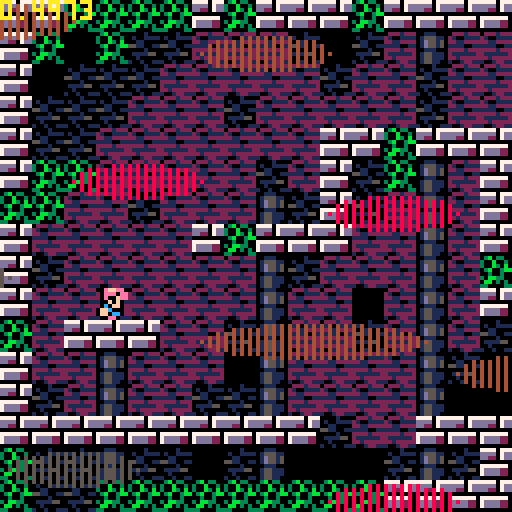
You’re a quick-moving adventurer that can jump around and throw daggers.
So far, it has basic character animations: idle, walk, jump, fall and shoot. There’s also some background tiles, and a repeating foreground layer with some simple oval-shaped clouds .
The platforming code handles the basics of moving and jumping around, I recycled a lot of old code to get going on this. Dug up things from like 5 or 6 older unreleased projects of mine, and recycled various code to do with entities and collisions. Everything was adjusted to fit better after the fact, so it felt a bit more cohesive rather than just tossed together. Still, having some existing groundwork definitely helped with iterating quickly instead of spending all my energy on coding yet another entity system from scratch, heh.
I implemented input buffering, so if you hit the jump button or attack slightly early, it will do the action if it becomes possible in a short moment after you press the input. This allows jumping slightly before landing, and hitting attack without needing to be as precise. I will probably add support for jumping for a short window into falling too, but in practice I think this this is not as vital to game feel as buffering – some newer games depend too heavily on “coyote time” for their jumps, in my opinion, and I’m okay with late input having a penalty.
Another nice aspect of recycling old code, is that with only a few minor edits, room logic and enemy designs from the PICO-8 version of Wandering Magic can be dropped into this. While the enemies were designed for a top-down game, some work just as well in a platformer and can be used for prototyping. I need to implement a couple more things before the player and enemies can hurt each other, but the basic movement code for these could be carried over.
So yeah. On the one hand, I started another project rather than trying to continue existing ones. But at the same time, given my current mental block, just being able to work on anything again was nice. I’m unsure where I’ll go with it, but it was fun to jam. I think it was possible because I could create without too much care, just whatever seems neat and letting my mind drift there.
At this point I still have no idea what the game is about, or whether I will keep working on it, but at the very least it was neat to play around with something over the weekend. It’s also still at a stage where it’s relatively easy to iterate and adjust, even if I shelved it for a little.
I’m trying to move the creative challenges into the level design instead of code, and stick to a format that fits easily within PICO-8’s confines. PICO-8 has a bunch of limitations, 128x128 screen, limited code, limited map + tile space, a 16-color palette, etc. If you don’t compress your maps, PICO-8 gives the choice of either 128 tiles + a 128x64 map (or 8x4 = 32 screens), or you can do 256 tiles but you only get a 128x32 map (8 x 2 = 16 screens). I’d rather have the extra map space since the art is quite small and I can make that work. But even then, only 32 screens for the whole world is a challenge.
If you do compress your maps, then you can fit more data, but this comes at the expense of a much more complicated development process, since for anything that doesn’t stick to the basic format, you need to make your own tools and lose out on the built-in map editor tool. You also need to sacrifice code space to write a decompression routine. It can pay off for some kinds of games I guess if you’re willing to put in that sort of effort, but I would rather not go down that road! (this time)
Too many past projects of mine tried to fight against these size limitations and ended up getting stuck mid-dev. So instead, attempting to embrace the limitations, and design stuff to extend the length of the game in the confined level space, and make it more interesting to navigate the space, it will probably have some non-linear elements, as well as gated challenges, puzzles, events, and reasons to revisit areas.
The PICO-8 version of Wandering Magic stuck to the 32-screen format and managed to get a demo that was about 30 minutes long, with plenty of room to spare, so I think it’s possible to do something interesting in this limit design space. Might need to tweak the movement speeds slightly so the player can’t breeze through rooms, but hoping it can stay pretty fast-paced overall.
Still trying to figure out how to build the maps for this, thinking of drawing an 8x4 grid of boxes on paper, and figuring out in the abstract what challenges and exotic elements each room have + as well as coming up with neat paths through this space. Fill in the blanks. Then actually craft the rooms, using those constraints. I have no idea if this a good approach to the design, but it’s what I had in mind to try for starters.
Anyways, that will do it for this week. I’m still very much under the weather and this new project is if nothing else, a nice diversion from a mental and creative block. Hopefully can keep this momentum going and turn things around for the better.
-
Another week passes. More tweaks and polish were made to last week’s untitled PICO-8 platformer prototype.
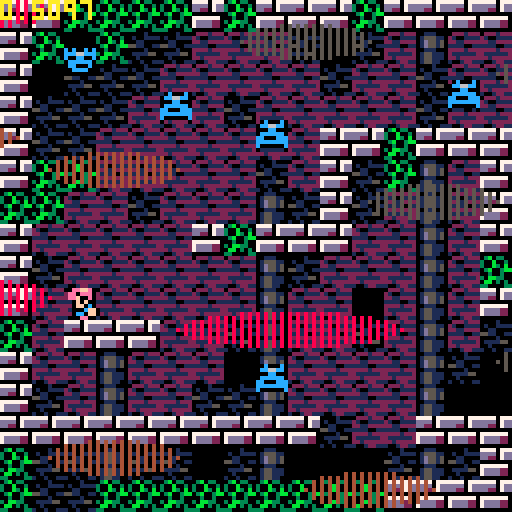
I added some bat enemies, adapted from some old code but with slightly modified behaviour. Then I added the ability to hurt and defeat enemies, with small hitflash on damage and small sprite vfx when they dematerialize. I also drew a new player hurt animation and implemented the reaction in-game (no player HP at the moment though).
I also adjusted the player art to have more readable poses, and some of the background tiles were slightly cleaned up. The art was edited even more since the above GIF was captured. I’ve tried different hair styles and color schemes for the player but couldn’t find anything satisfactory yet for mood / readability against background colors. So the self-insert miniature character remains for now.
The player walk speed was slightly slowed, so that you can’t completely breeze through rooms, and it effectively makes it so there’s more area to cover within one screen. The collision code was improved to allow corner nudging when jumping into a ceiling corner, for better control while still allowing a full tile-wide collision box on the player.
Progress has sort of slowed down from there. I struggled to put together other rooms that seem fun to navigate. I couldn’t figure out ideas for how the game should progress yet. And I couldn’t figure out many adjustments to the player character for the time being, but this is less crucial at this stage than the other elements.
I’m still under the weather at the moment, and it’s become very easy right now to have small things completely stop me in my tracks. I was away from my computer this weekend, which helped a little bit for morale, even if it meant not doing creative work. But then, returning to the work week sort of deflated that, and drained my batteries once again. Hoping I can snap out of this and bounce back.
It would be nice to continue things, if I can figure out where to go with it. The progress that’s there is early enough that there’s plenty of room to still change the game and expand on what’s there. And in the worst case, not too much time was lost, if for some reason it’s not continued. But I’d ideally like to keep going, rather than abandoning the project, if I can work back the energy to do more sideproject work.
I’m getting my second vaccination this Saturday, Depending on how that goes, I’ll probably be recovering from that for a couple days. If I’m not completely out-of-commission, I might get a bit of time to focus on side-project things some more. We’ll see.
Anyway, have a good week! Bye for now.
-
Hi, here’s another weekly update.
I started blocking out some other rooms. I made this forest / plant zone underneath the “castle” zone:

Still super rough, and it will probably need to change as enemies and interactive objects are placed, and game progression is figured out. Anyway, having fun trying stuff out.
Trying to keep to decorating things with a limited amount of tiles, conveying the general texture / theme of stuff with a couple small repeating patterns. The forest uses about 3 main tiles:
- foreground “grass”/“bush”/“leaf” tiles
- background tangled knot of roots/branches
- background vines/branches
Then there’s a couple blocks or bricks over that, but they’re less common in the central rooms of this area.
In designing the rooms, I tried to make sure every area has multiple exits and distinct areas that can be reached. I’ve been trying to make branching paths that have you weave through multiple rooms, so you need to figure out how things connect. It’s pretty basic so far though. There’s no key items or collectable abilities yet, so it’s pretty easy to “solve the maze” heh.
I still don’t know how I’ll fill in the rooms yet, but it’s a start.
Also started mocking up this HUD, just tossing something very basic in:
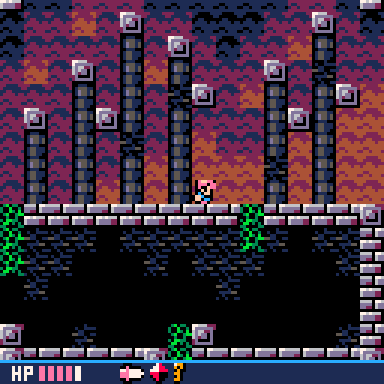
Since it’s a “fixed-screen” platformer, I thought a static full-width HUD probably makes the most sense. I was originally thinking of a HUD that repositions itself depending on your spot, but realized those are a bit annoying. And hiding the HUD isn’t really an option unless player health is communicated some other way, or you have a life bar over your player (ugly). And a fixed, floating HUD like Mega Man is more fitting for a game with a scrolling camera and fairly tall corridors, it doesn’t really work here. So static HUD it is!
To compensate for the 8px of space used by the HUD, I scrolled the camera up a half-tile (4px) which seems to work ok. And it saves the need to edit all existing rooms to be 15 tiles tall instead of 16. I prototyped scrolling the camera slightly as you navigated but found it a bit annoying in practice to see it pan every time you go. So a fixed half-tile offset seems to be an ok compromise.
Still seems like I’m in recovery mode, but every couple of nights, I poke at this prototype for an hour or so. Wish I could eventually figure out where this is headed, but it’s still nice to make minor progress somewhere.
I also got my second shot on the weekend. Aside from a bit of a bruised/heavy feeling in my arm, and being a bit drowsy afterwards initially, there weren’t really a lot of other side-effects. After the 2 week recovery mark passes, this may mean more changes, as it will be possible to do a little more outside of the house. I’m still pretty hesitant about being too ambitious with that though, since lots of people still aren’t vaccinated yet, and the new delta variant, etc. Also it may mean working outside of my house a couple days a week, and I have mixed feelings about this. We’ll see.
Anyway, catch you next time!
-
Hi! It’s been a while! I haven’t posted in a while, I might try to write a proper full blog post at some point. But for now, I thought I’d do a little “Happy Holidays” post and share something neat I’ve been working on:
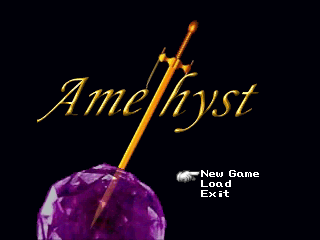
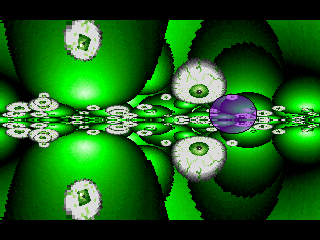
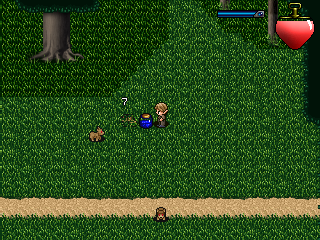
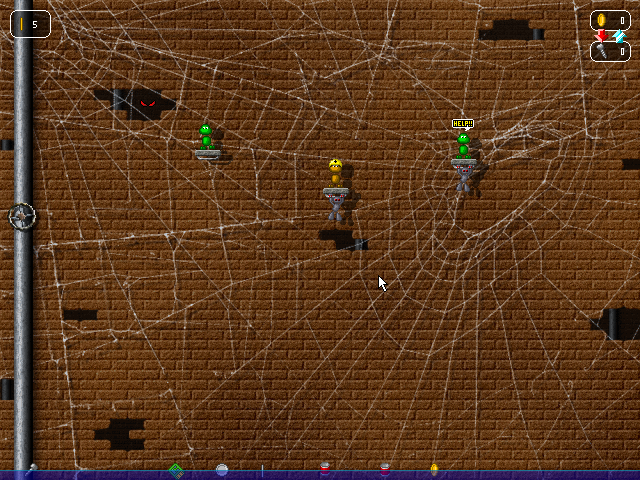
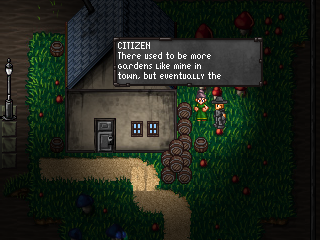
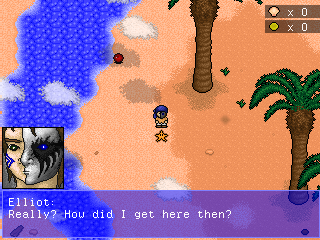
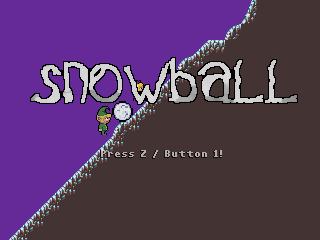
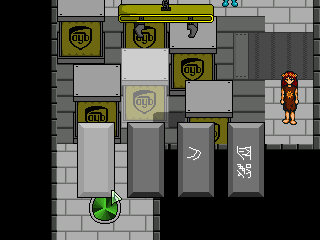
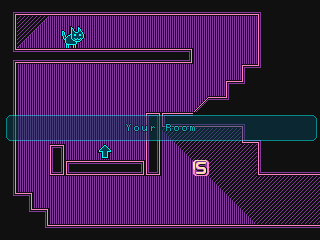
These are screenshots from an in-the-browser version of Verge 3, running a few games I’ve tested/gotten working with it. It’s built on top Emscripten, and targets a WASM binary. Only tested in Chrome, but should probably work in Firefox too – needs a fairly modern browser to support the features it needs to run, like audio worklets. Some of these aren’t even compatible under the newest Verge, so this was simultaneously a project to port to the web, and to add compatibility configs to Verge so that it could open older versions.
Try it out: https://make.vg/v3wasm/wip-2022-12-22/ (fingers crossed the bandwidth for this isn’t going to be too heavy and melt down my poor server, these are pretty big downloads, but we’ll try it for now!)
The source branch is here: https://github.com/verge-rpg/verge3/tree/ovk-wip-3.2-wasm-2022
Thanks to the work already done by Andy Friesen on v1wasm + v2wasm (Verge Archive: https://andyfriesen.com/verge-archive/) a lot of stuff was already figured out. This builds off that, makes some improvements, and also solves more problems unique to V3. I’d eventually like to merge it in with the rest of the Verge Archive page.
It would potentially be neat to cut a new desktop build when this is done, too.
Basically, I undo the trunk changes after Verge 3.2 that removed VC in favor of only Lua + some other sweeping ‘kill legacy code’ changes that didn’t pan out. In hindsight, it was probably overambitious, and also didn’t anticipate that running old versions of Verge would become increasingly harder in newer OSes.
I added a bunch of compatibility stuff to deal with incompatible versions of system.xvc – the sad part is, Verge 3 had a version in its system.xvc, but not once did we bump it as we changed the format. I guess the assumption there was we’d never want to run an xvc from an older version with a new one, you should always redistribute it with the verge.exe it was meant to be played with, and we’d always have source access to generate the xvc. But that doesn’t really work as great if you want to play those old versions years later, after the source was lost, and the version of executable they came with is maybe not working that well in newer Windows.
There’s also some compatibility for compiling VC code, re-adding some language features that were previously removed, allowing a way to override the built-in library functions in user code (min, max, abs redefinition problems come up a lot), and ignoring duplicate definitions for some stuff (some games redefine things more than once, and it used to compile because it would ignore the second definition).
Another thing is this uses SDL 2 instead of 1.3 like it used to for its SDL backends. This means it builds against something that actually has long-term support and unlike 1.3, SDL2 has a native wasm build provided with Emscripten.
The Linux and Mac ports could benefit from the SDL 2 migration, if they were dusted off. The Linux build will no longer need X11 to do MessageBox since SDL provides its own implementation now, joysticks support hot-plugging in the SDL build. I implemented some window scaling stuff for the SDL version that previously was only done for the GDI windows version. Additionally, the WASM build of the game has an interesting thing where it will auto-escape slashes + lowercase all the paths you pass it as part of opening a file – it would be cool if we had a mode to let desktop builds also do this, so Windows-only games can be portable without changing the original game.
One thing I’d really like to see is a way to run games from .zip. Then it wouldn’t need to prepare a manifest.txt (a file listing used by the web version can preload the files), since the listing could be taken directly from the zip directory structure, and the browser could fetch less things + have slightly more compression. (maybe not a big deal in light of GZIP’d http responses, but still, could be worth looking into). The other advantage, is the paths don’t need to be lower-cased. And overall, more games could be run as-is directly out of their archive, aside from potentially needing verge.cfg edits.
Anyway, posting it in case so other people can check out / potentially help continue the effort! I’m going to be busy with holidays, and may need a break from this project. Still, I’m impressed what was possible in such a short time. I started this a couple weeks ago + plugged away at it on nights/weekends and a little bit on my break.
Seeing this engine suddenly run these old games in the browser is kinda magic, I hope it can keep being improved!